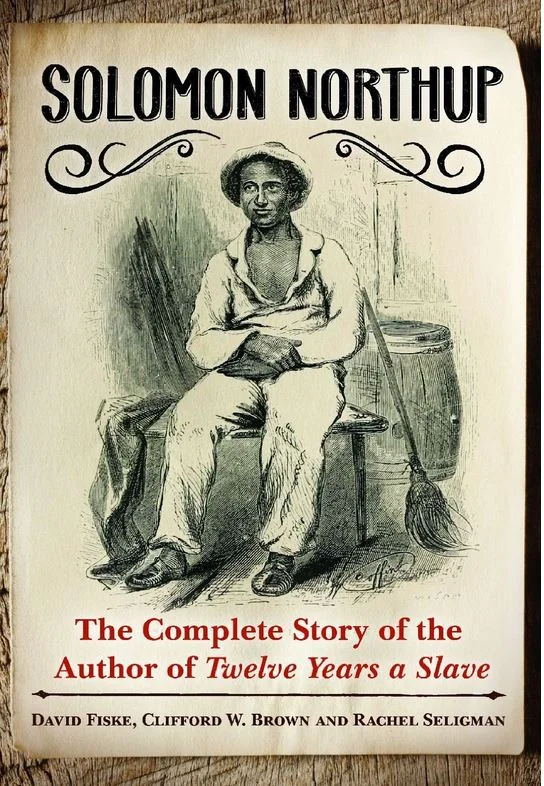Twelve Years A Slave: Solomon Northup of Minerva
/You can buy the book from Amazon by clicking here
(This story was first published in the Adirondack Almanack and is reprinted with permission of the author and the Almanack).
Minerva, primitive and remote in the early 1800s, hardly would have seemed a likely birthplace for a man who would write a book which would attract national attention, make the author a household name, and, to some degree, help start a civil war. But indeed, it was there that Solomon Northup, author of Twelve Years A Slave, was born.
Technically the town of Minerva did not exist at the time of Solomon’s birth on July 10, 1807 (though his book gives 1808 as his year of birth, more official documents have it as 1807); the town of Minerva was not formed until 1817. In 1807 the area, not yet known as Minerva, would have been part of the Town of Schroon.
Even at its incorporation in 1817, Minerva was small and rudimentary; just a few log cabins. Mountains and poor roads kept its inhabitants largely isolated from other settlements. An early resident called it “a rugged and mountainous town,” with one-third of its area being mountain, another third arable land, and the remainder “rough and stony.” A local history notes that, despite its having some excellent farms, “a large portion of the soil is cold and hard and only moderately productive.”
To this place came a man, a former slave who had become free just a few years earlier. He was Mintus Northup, the father of Solomon. Mabel Jones wrote that the early settlers arrived there after a short stay in several Washington County towns (including Granville). Granville was home to several members of the Northup family, and Mintus had been a slave to one of these Northups.
Perhaps Mintus, after being emancipated, was invited by Granville acquaintances to journey with them to Essex County, and to participate in settling a new town. Whatever his motivation for going there, probably around 1804, some unknown factors resulted in his departure. Mintus, now with a family (a wife and two sons), was living in Washington County by about 1810.
Solomon reached manhood in the Hudson Falls/Fort Edward area, working on farms, lumbering, performing maintenance on the Champlain Canal, and rafting supplies on the canal and on Lake Champlain. He married and in time moved to Saratoga Springs, pursuing various odd jobs in that resort community. In Saratoga, income was more easily come by during the summer months, when visitors flocked to its hotels.
Toward the end of the winter in 1841, Solomon – probably short on funds – was offered a chance for easy money. His talent with the fiddle had become known to two men who sought a musician for a traveling circus they operated. Solomon accepted their invitation to accompany them, but instead of a short-term engagement as an entertainer, he instead had a long run as a slave in Louisiana. His potential employers had sold him to a slave dealer.
Solomon’s privations and sufferings as a slave are related in detail in his book, published in 1853 after he was remarkably rescued by his friend Henry B. Northup. The book, widely read, helped explain slavery to a nation that was becoming increasingly sensitive to the issue. Though describing many brutalities and cruelties endured by Solomon and other slaves, the book was surprisingly evenhanded, telling of some of the niceties enjoyed by slaves, and also of kindnesses done them by white residents. The narrative seemed authentic. It was believed.
Many factors led to the outbreak of the Civil War. Twelve Years A Slave, by bringing the slavery issue right into homes in the North, was surely one of them. The book, even 160 years later, continues to fascinate readers–it was chosen as the 2013 title by Saratoga Reads, and has now been adapted into a motion picture. The film, directed by avante-garde British filmmaker Steve McQueen, features a star-studded cast and will enjoy wide distribution this fall.
Solomon’s Adirondack connection was not limited to his birth. After his return he lived in Glens Falls for several years. He also traveled widely, lecturing and promoting his book. Newspaper notices of his many appearances show that he visited Moore’s Fork in Clinton County, Watertown, and Utica. He probably made other appearances in the region that weren’t reported by newspapers.
Evidence shows that Solomon’s other activities included working on the Underground Railroad, but what he did after about 1863 remains elusive. No newspaper notices or other records of his death have yet been located for this North Country native.
David Fiskeis a co-author of the book Solomon Northup: The Complete Story of the Author of Twelve Years a Slave, Praeger Publishing, 2013. Fiske also maintains the webpage solomonnorthup.com.











